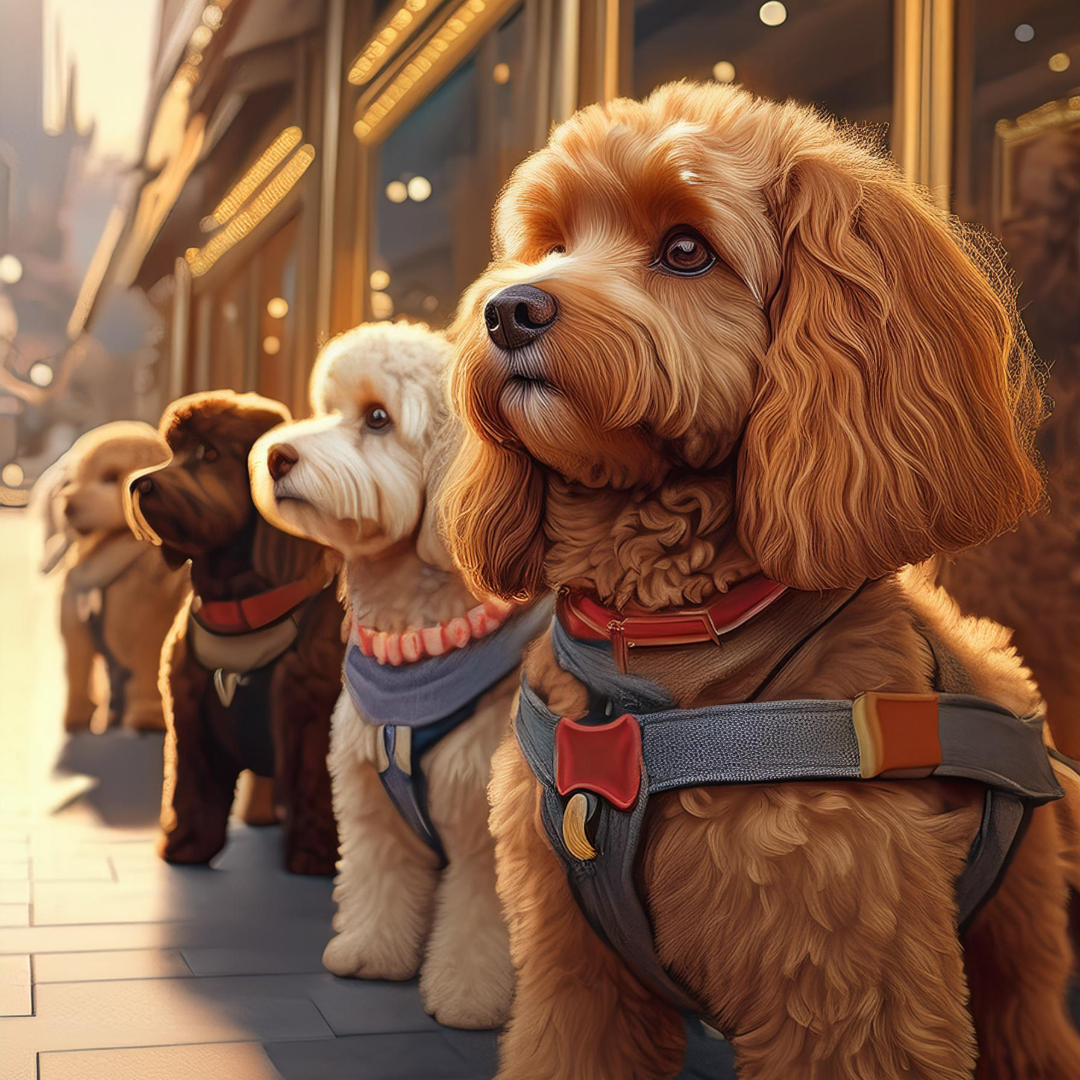
Finding the Perfect Fit - A Guide to Harnesses for Pups
Share
So, you've welcomed a delightful ball of fluff into your life – congratulations!
Now comes the exciting (and sometimes overwhelming) task of equipping your new best friend with all the essentials. One of the most important purchases you'll make is a harness. But with so many options available, how do you choose the right one for your growing pup?
At Snazzy Pooch, we understand that every pup is unique. Different breeds have different needs, and the perfect harness for a lumbering Great Dane won't be the same as the ideal fit for a nimble Jack Russell Terrier. Let's delve into the world of puppy harnesses, exploring the pros and cons of various types to help you find the perfect fit for your furry friend.
The Benefits of Harnesses for Pups.
Harnesses offer several advantages over traditional collars, especially for puppies.
🐾 Improved Comfort: Harnesses distribute pressure evenly across your pup's chest and shoulders, making walks more comfortable, especially for those prone to pulling.
🐾 Training Advantage: Harnesses give you more control during walks without putting strain on your pup's delicate neck. This is particularly helpful during leash training.
🐾 Reduced Risk of Injury: Harnesses minimize the risk of neck injuries that can occur with a collar, especially if your pup pulls or lunges.
Harness Options for Different Breeds
Now, let's explore some popular harness styles and how they suit different puppy breeds
🐾 Standard "H" Harness: This is a versatile option that works well for most breeds. It's comfortable, provides good control, and comes in various sizes and styles.
🐾 Pros: Great all-rounder, comfortable, good for training.
🐾 Cons: Might not be escape-proof for Houdini-like pups.
🐾 Front-Clip Harness: This harness features a clip at the front of the chest, which can help discourage pulling by gently steering your pup back towards you.
🐾 Pros: Excellent for training, discourages pulling.
🐾 Cons: Might not be suitable for brachycephalic breeds (pugs, bulldogs) due to potential airway restriction.
Back-Clip Harness: This traditional harness clips at the back, offering less control but being a good option for confident walkers who don't pull.
🐾 Pros: Comfortable for relaxed walks, allows for natural movement.
🐾 Cons: Less control for pups who pull.
Step-In Harness: This easy-to-use harness simply slips over your pup's head and buckles underneath. Great for quick walks or pups who dislike having things put over their heads.
🐾 Pros: Easy to put on and take off, comfortable.
🐾 Cons: Might not be as secure as other styles, especially for escape artists.
Additional Considerations
Here are some other factors to keep in mind when choosing a harness for your pup:
🐾 Size: A proper fit is crucial for comfort and safety. Measure your pup's chest circumference to ensure a snug but not restrictive fit.
🐾 Adjustability: Look for a harness that allows for adjustments to accommodate your pup's growth.
🐾 Material: Choose a breathable and comfortable material, like padded mesh, for your pup's delicate skin.
🐾 Durability: Opt for a harness made from high-quality materials that can withstand playful puppy antics.
Remember: When in doubt, consult with your veterinarian or a professional dog trainer for personalized recommendations on the best harness for your furry friend.
Conclusion
Finding the right harness for your puppy sets the foundation for happy and comfortable walks. By considering your pup's breed, size, and personality, you can choose a harness that promotes safety, comfort, and enjoyable training sessions. With a little research and the help of Snazzy Pooch's wide selection of harnesses, you're sure to find the perfect fit for your favourite pup!
